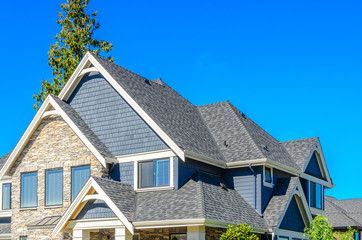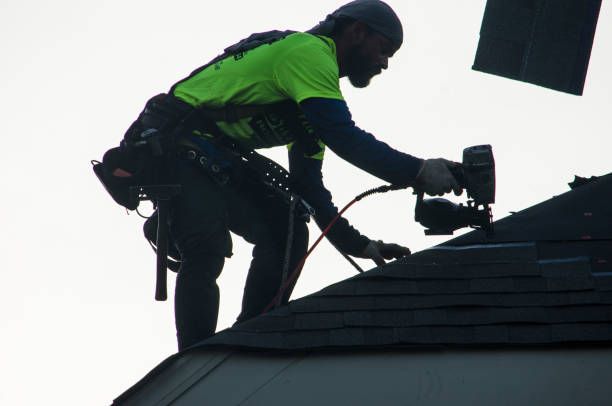Roofing Trends 2024: A Comprehensive Guide

The roofing industry is constantly evolving, and new trends are emerging each year. As we step into 2024, it's essential to stay informed about the latest Roofing West Chester PA trends and make informed decisions when it comes to your roof. Whether you're considering a new roof or looking to upgrade your current one, understanding the roofing trends for 2024 can help you make the right choices for your home. In this comprehensive guide, we will explore the emerging Roofing trends, popular roofing types, pros and cons, the influence of climate, leading roofing brands, regulations, and the exciting future of self-sustaining roofs..
Emerging Roofing Trends in 2024
As we look ahead to 2024, several key roofing trends are expected to gain momentum. The focus on sustainability will continue, with homeowners seeking eco-friendly roofing options that reduce their environmental impact while providing energy-efficient solutions. Technological advancements, such as smart home apps and solar shingles, will revolutionize the roofing industry, making it more convenient and efficient for homeowners. Green roofs, with their environmental benefits and insulation properties, are also expected to gain popularity in the coming years.
Understanding the Shift towards Sustainability
The shift towards sustainability in Roofing West Chester PA reflects a broader commitment to environmental conservation and energy efficiency. Sustainable roofing practices prioritize reducing environmental impact, decreasing energy consumption, and promoting renewable resources. One of the emerging trends in sustainable roofing is the increasing popularity of green roofs. These roofs are designed to support vegetation, providing natural insulation, reducing heat absorption, and improving air quality. Additionally, the installation of gutter guards is becoming more common, preventing debris from clogging gutters and ensuring efficient rainwater management. Read about Roofers in West Chester: Your Trusted Roofing Experts to learn more.
Technological Advancements in Roofing
Technological advancements are driving innovation in the roofing industry, improving both efficiency and convenience for homeowners. One of the most significant advancements is the development of solar shingles, which integrate photovoltaic technology into traditional roofing materials, allowing homeowners to generate renewable energy while maintaining the aesthetic appeal of their roof. Additionally, the rise of smart home apps enables homeowners to monitor their roof's condition, receive alerts for maintenance or repairs, and even control their roof's climate through automated systems. These advancements make roofing more accessible, efficient, and environmentally friendly.
Most Popular Roofing Types for 2024
In 2024, several roofing types are expected to dominate the market. Green roofs, as mentioned earlier, will grow in popularity due to their environmental benefits and insulation properties. Solar shingles, which combine energy generation with traditional roofing materials, will also see increased adoption as homeowners seek energy-efficient solutions. Another popular choice will be slate roofing, known for its durability, fire resistance, and classic architectural appeal. Each of these roofing types offers unique advantages, allowing homeowners to choose the option that best fits their needs and preferences.
Green Roofs
Green roofs have gained popularity in recent years and are expected to continue as a popular roofing trend in 2024. These roofs involve the installation of vegetation on the roof, providing numerous benefits. Firstly, they contribute to improved air quality by absorbing carbon dioxide and releasing oxygen. Green roofs also act as natural insulation, reducing heat absorption and energy consumption, thus lowering utility costs. Additionally, they help manage stormwater by absorbing rainfall, reducing the strain on drainage systems. Furthermore, green roofs enhance the curb appeal of homes, giving them a visually appealing and environmentally friendly touch.
Solar Shingles
Solar shingles offer an innovative solution for homeowners looking to harness solar power while maintaining the aesthetics of their roof. Here are some key points about solar shingles:
Energy efficiency: Solar shingles generate renewable energy, reducing reliance on traditional energy sources and lowering utility costs.
Aesthetics: Solar shingles seamlessly integrate into the roof, providing a visually appealing solution that doesn't compromise the home's overall appearance.
Maximized roof space: Solar shingles cover the entire roof, making efficient use of available space for solar power generation.
Durability: Solar shingles are designed to withstand harsh weather conditions, providing long-lasting performance and protection.
Environmental benefits: By generating clean energy, solar shingles help reduce carbon emissions, contributing to a more sustainable future.
Slate Roofing
Slate roofing is a timeless and durable roofing option that offers both aesthetic appeal and long-term value. Some key aspects of slate roofing include:
Durability: Slate is known for its exceptional durability, with roofs lasting up to a century or more when properly maintained.
Fire resistance: Slate roofing is inherently fireproof, providing added protection in case of a fire.
Architectural appeal: Slate roofing adds a touch of elegance and sophistication to any home, enhancing its architectural appearance.
Low maintenance: Slate requires minimal maintenance, making it an attractive choice for homeowners seeking a durable and hassle-free roofing option.
Weather resistance: Slate's natural properties make it highly resistant to weather extremes, including wind, hail, and UV radiation. This ensures long-term performance and protection.
Pros and Cons of Different Roofing Types
Choosing the right roofing type for your home requires considering various factors, including durability, lifespan, costs, and maintenance requirements. Here, we'll analyze the pros and cons of different roofing types, helping you make an informed decision.
Analyzing Durability and Lifespan
When it comes to roofing, durability and lifespan are crucial considerations. Here are some key points about the longevity of different roofing materials:
Durability of cedar roofing: Cedar roofing is known for its natural durability, with proper maintenance, cedar roofs can last up to 30 years or more.
Longevity of metal roofing: Metal roofing offers exceptional durability, with a lifespan ranging from 40 to 70 years, depending on the specific metal used.
Warranties: Many manufacturers offer warranties on roofing materials, providing added peace of mind for homeowners when it comes to durability and lifespan.
Influence of Climate on Roofing Choices
Climate plays a significant role in determining the most suitable roofing options for different regions. The roofing choices for cold climates differ from those in hot regions. Understanding how climate influences roofing choices is crucial for selecting the right option for your home.
Best Roofing for Cold Climates
In cold climates where snow and freezing temperatures are frequent, certain roofing materials perform better. Consider the following options:
Asphalt shingles with underlayment: Asphalt shingles, when paired with proper underlayment, provide added insulation against cold weather.
Metal roofing: Metal roofs have excellent snow-shedding capabilities, preventing ice dams and minimizing the risk of damage.
Architectural shingles: These shingles offer a stylish look while providing durability and enhanced protection against cold climates.
Bitumen roofing: Bitumen roofing, known for its exceptional insulation properties, is an ideal choice for cold regions.
Cedar shakes: Cedar shakes offer natural insulation and a rustic charm suitable for cold climates.
Optimal Choices for Hotter Regions
In hotter regions, roofing materials that provide heat resistance and energy efficiency are preferred. Consider the following options:
TPO roofing: TPO (Thermoplastic Olefin) roofing is known for its energy efficiency and ability to reflect sunlight, keeping interiors cool.
Metal roofing: Metal roofs, with their reflective properties, help reduce heat absorption, making them suitable for hotter regions.
Slate roofing: Slate roofs, although expensive, offer durability and elegance, while also providing effective heat resistance.
Roll roofing: Roll roofing, an affordable option, is easy to install and well-suited for hotter regions due to its cooling properties.
Copper roofing: Copper roofing adds a touch of sophistication to homes in hot regions, thanks to its durability and excellent heat conductivity.
Roofing Regulations and Guidelines
In the roofing industry, adhering to regulations and guidelines is paramount for safety and structural integrity. Building codes and safety standards outline the minimum requirements for roofing installations, ensuring that roofs meet specific criteria. It's important to understand the importance of these regulations to comply with legal requirements and ensure the roof is durable and safe for occupants.
Importance of Building Codes
Building codes are crucial for maintaining structural integrity and safety in roofing installations. Here's why they matter:
Structural integrity: Building codes dictate the minimum standards for roof construction, ensuring that roofs have sufficient strength and durability to withstand various weather conditions.
Safety regulations Building codes include safety measures, such as the use of proper materials, ventilation requirements, and fire resistance, to protect homeowners and construction workers.
Legal compliance Compliance with building codes is essential for obtaining permits and meeting legal requirements during roofing projects.
Quality assurance Building codes help maintain a high standard of quality, ensuring that roofing installations meet established guidelines.
Adhering to Safety Standards
Adopting and adhering to safety standards is fundamental in the roofing industry to create a secure working environment and protect workers and homeowners. Here's why safety standards matter:
Worker safety: Safety standards prioritize the well-being of roofers by providing guidelines and protocols to minimize hazards during roofing projects.
Durable roofing: Following safety protocols ensures that roofing installations are done correctly, preventing potential issues that may compromise the roof's integrity and longevity.
Customer satisfaction: Adhering to safety standards demonstrates professionalism and customer commitment, enhancing homeowner confidence in the quality of the roofing work.
Conclusion
Spring Valley Roofing is paving the way for sustainable and technologically advanced solutions. From eco-friendly options like green roofs to innovative solar shingles and classic slate roofing, the choices are diverse. Consider factors like durability, costs, and maintenance needs when selecting the best roofing type for your region's climate. Trusting reputable brands and adhering to regulations ensure quality installations. The future may see a rise in self-sustaining roofs, revolutionizing the industry. Stay informed about these trends to make informed decisions for your roofing needs in 2024. Call our experts today!
Frequently Asked Question
What is the trend in roofing in 2024?
In 2024, roofing trends are shifting towards sustainability with the rise of green roofs and solar panel integration for energy efficiency. Metal roofs are gaining popularity for their durability and modern appeal. Smart technologies like leak detection sensors are expected to dominate the industry.



